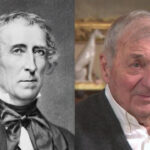My entry into the world of professional writing began with a TV show called Get a Life. It was heavily influenced by the distinctive voices of its creators, Chris Elliott and Adam Resnick, alumni of the legendary David Letterman Show. Adam Resnick’s scripts were truly the highlight of Get a Life, and our primary task as writers was to emulate his unique style. That was the job description, essentially.
Initially, this felt creatively stifling. I struggled with the notion that my role was to mimic someone else’s voice. It became clear that the solution lay in discovering a space where my own voice could emerge, unfiltered and authentic. The biggest hurdle was overcoming the ingrained self-doubt – that nagging feeling that “you,” in your own right, isn’t inherently interesting or valuable.
Early on in that Get a Life writing room, I experienced a strange paralysis. Despite being in a sitcom writing environment, I found myself unable to speak. It wasn’t a conscious choice to remain silent; rather, words simply wouldn’t come. This lasted for about six weeks. I fully expected to be fired, and in retrospect, perhaps I should have been.
The screenplay for Being John Malkovich came into being during a period of waiting for the next round of sitcom hiring. My intention was pragmatic: to write a script that could serve as a portfolio piece, a means to secure future work. Two disparate ideas had been floating around in my mind – one about discovering a portal into someone else’s consciousness, and another about an affair with a coworker. Finding neither particularly compelling on their own, I decided to fuse them together.
Image alt text: A still from the movie “Being John Malkovich” featuring John Malkovich looking directly at the camera with a puzzled expression, highlighting the film’s central concept of entering Malkovich’s mind.
The script for Being John Malkovich garnered an unexpectedly positive response. Suddenly, I started gaining some recognition. People read it, praised its humor, invited me to meetings, and almost uniformly declared that it would never actually be made into a movie. I had around fifteen such meetings, so my expectations for production were low. Then, the script found its way to Spike Jonze, who was in a position to bring films to life. Even then, neither of us anticipated the impact it would have. I recall its premiere at the Venice Film Festival as its first real exposure. I wasn’t invited, but Spike, Cameron Diaz, and Catherine Keener were. Then, I received a phone call informing me that it had become a significant event, followed by a wave of articles and media attention. It was truly exhilarating.
Storytelling, at its core, is a transformative and potentially distorting process. Reflect on a traumatic experience from your past. Consider your initial experience of it. Now, think about how you recounted it a year later. Finally, consider the version you tell for the hundredth time. It’s fundamentally different each time. While perspective is often lauded as beneficial – allowing for character arcs, moral application, and contextual understanding – it’s also a form of misrepresentation. It’s a reconstruction imbued with meaning, often bearing little resemblance to the raw event itself.
This transformation is further driven by adjustment. You instinctively identify which parts of the story resonate, which to exaggerate, and which to discard. You refine it with the goal of being entertaining. This holds true whether you’re sharing a story at a dinner party or crafting a narrative for the big screen, like Being John Malkovich. Don’t let anyone dictate the essential elements of a story or what it must include. As an exercise, try writing a “non-story.” It might just surprise you by being remarkably different.
Let me share a brief, cinematic anecdote. During my neighborhood runs, I encountered an older, burly man running in the opposite direction. He was clearly struggling, heavily out of breath. As we passed on a slight incline – I downhill, he uphill – he quipped, “Well, sure, it’s all downhill that way.” I loved the joke. It felt like a connection. In my mind, this was a cool guy, now a friendly acquaintance.
Image alt text: A scene from “Being John Malkovich” directed by Spike Jonze, showcasing the film’s surreal and imaginative visual style that contributed to its critical acclaim.
Weeks later, I saw him again, thinking, “There’s that cool guy.” As we passed, he repeated, “Well, sure, it’s all downhill that way.” I thought, “Okay, he’s got a routine. Maybe I’m not so special. He probably says it to others, perhaps doesn’t even remember me… but okay.” I laughed, though this time it was a bit forced.
Then, it happened again. And again. Once, he said it while going downhill and I was going uphill, making absolutely no sense. I began to feel uncomfortable, embarrassed for him, wondering if something was wrong. This continued, maybe seven or eight more times. I started actively avoiding him.
What fascinates me is how the story evolved internally, even though the external reality remained unchanged. The shift occurred entirely within my perception, a realization dawning on my character – me, in this mini-narrative. And the story’s power lies in its specific form. It couldn’t be conveyed through a painting. The core lesson is the importance of medium specificity. Your work should leverage the unique capabilities of your chosen medium. If you can’t articulate why it must be done in that particular way, then perhaps it doesn’t need to be done at all. This principle is something I considered deeply when writing Being John Malkovich, ensuring the screenplay exploited the cinematic medium to its fullest potential.
This piece is adapted from a lecture delivered by Charlie Kaufman for Bafta and the BFI. The complete series is available at bafta.org/screenwriters.

